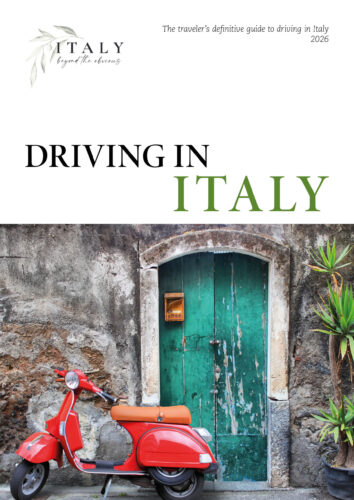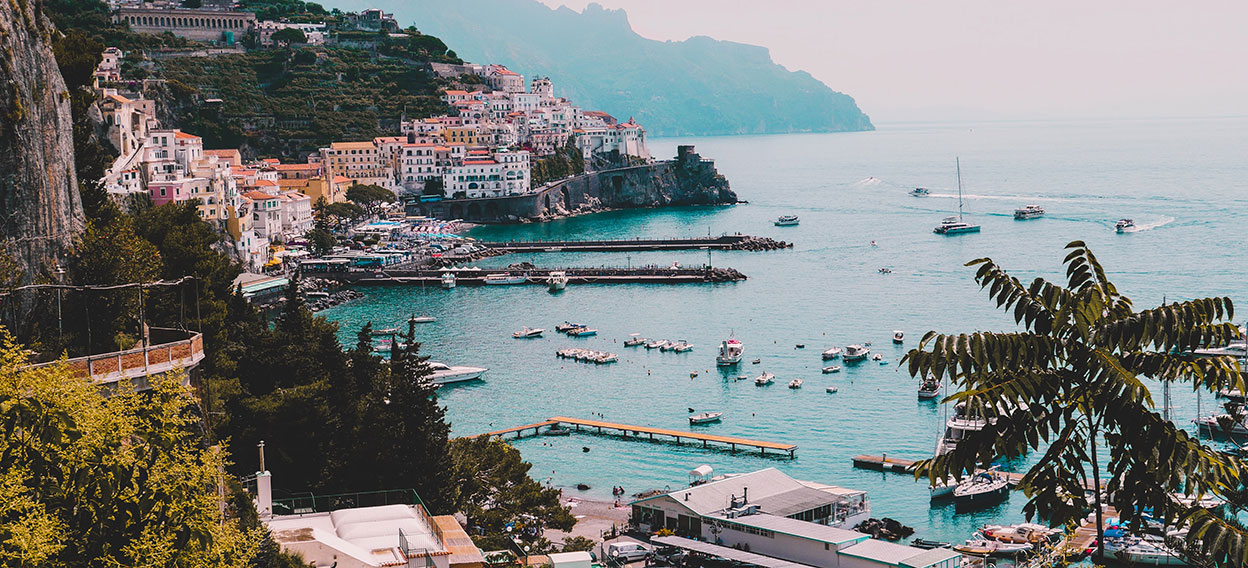A Sicily itinerary: What to see and do
In August I did a podcast with the Amateur Traveler about what to see on the Italian island of Sicily. Here’s the summary of our discussion.
Sicily could be described as: Italy, compact and concentrate. The tourist infrastructure is not as developed as in the rest of Italy and it’s not as expensive. You’ll definitely meet the locals and find it easier to have a true Sicilian experience. Then again, transportation and tourist attractions are not as reliable or robust. Sicily can be unpredictable and raw, but it’s authentic, exciting, and gorgeous. I’d recommend it to anyone, and in fact I chose it as my own honeymoon destination.
An Extremely Brief History of Sicily
Sicily has been inhabited for thousands of years: by the Greeks, Romans, Saracens from Northern Africa, Normans, Spanish, and of course is now Italian. The beauty of this history is that the culture has been influenced by each of these groups, which makes it quite different from the rest of Italy.
A Sicily itinerary
The podcast starts in the city of Messina, and we move around the island clockwise. Messina is a logical starting point for anyone arriving from the Italian peninsula, but of course you could start anywhere. The route below would take about 2 weeks, done at a reasonable pace, but the island is small enough that you could just hit the highlights to make it shorter. The cities I covered in the podcast are marked in blue on the map at the end of this post, and I’ve included a couple other places, marked in purple, that we didn’t discuss but I recommend
Taormina
A gorgeous town overlooking the water, Taormina is famous for its part-Greek part-Roman theatre (the top photo of this post), incredible views over the sea, and is home to a few of Italy’s best hotels. I’ve written about Taormina before, so we’ll move on.
Siracuse
From Taormina, head south to Siracuse and visit its 3,000 year old Greek amphitheatre. Siracuse was once a significant city of the Roman Empire, right up there with Constantinople. One of my favorite memories of Siracuse is the lovely Sicilian salad we ate sitting by the water while we sat and soaked up the atmosphere. The island of Ortigia, connected to the city, is also worth a visit.
Spanish-Byzantine area
The towns of Ragusa, Ragusa Ibla, Modica, and Noto in the island’s southeast corner are part of an area that was destroyed by an earthquake in 1693 and completely rebuilt in a Spanish Byzantine architectural style. The island of Sicily has two Michelin-starred restaurants, and they’re both in this area! It has more recently attracted quite a few tourists, and I’ve heard it referred to as the new Tuscany.
Agrigento
Continue westward along the island’s southern coast to Agrigento, stopping at some incredible beaches if you can. In Agrigento, spend a day exploring the archaeological park of 2,500 year old Greek temples (photo above), which I’ve written about before. It’s also worth visiting the archaeological museum which in addition to other artifacts, houses an impressive collection of Roman mosaics.
Piazza Armerina
If you have any interest in mosaics, Sicily is a great place to be, because it has mosaics of different styles and subject matters. In addition to the Roman mosaics in Agrigento, Palermo’s Duomo and Capella Palatina and the nearby Duomo of Monreale are covered in jaw-dropping gold religious-themed mosaics. But my favorites are the mosaics in the Villa del Casale in Piazza Armerina which have nothing to do with saints or angels but instead depict African animals and unusual subjects as seen in the photo above.
Erice
From Agrigento keep heading west, stopping to walk through the Greek ruins at Selinunte – also pretty when viewed from the beach below. Farther up the western coast, drive up the steep road full of switchbacks up to the pretty town of Erice and – according to the guidebooks – enjoy the fabulous views over the sea and countryside. I wish I could vouch for this one, but when we went, the entire town was in a cloud. So while the atmosphere was magical, we saw nothing!
Palermo
I’ve written about Palermo before. A beautiful and chaotic city, Palermo has a lot to do, and many hidden gems for the somewhat adventurous tourist. In some places the city feels raw, but overall I’d describe it as an assault on the senses – and I don’t mean that in a bad way. Its chaotic, vibrant atmosphere reminds me more of India than of Italy sometimes.
One of my favorite moments in Palermo was when, exploring the market, one of the locals told us that the freshest fish could be found right next to the boats. We found a hole-in-the-wall restaurant with only a few tables, run by an older woman. She chose the freshest fish off the boats and that’s what was served. There were no menus and no listed prices. I still remember the squid that we ate but most of all, talking with her really brought the place to life for us.
My Favorite Part of Sicily
Climbing the live volcano on the island of Stromboli (photo above) is one of the best things I’ve done in Italy. I realize it’s not for everyone: it’s a strenuous hike, done in the middle of the night (summiting at midnight) and Stromboli is one of the Aeolian islands, which are partway to Naples. But the activity is spectacular. It starts with the approach by boat, when you see a perfect cone-shaped island emerging from the sea. Then, climbing in the dusk and then the dark, you’ll see the volcano spit fire against the night sky. We stayed on the relatively nearby island of Lipari for a few days, where I have great memories of beaches, markets, and still use the pottery I got there frequently.
Biggest Surprise
By the time I visited Sicily, I’d traveled around Italy very extensively, so the thing that really stuck out for me was the African influence, which is small but significant. Some examples of this influence include food items such as couscous, cinnamon, and raisins; or the African animal-themed mosaics in Piazza Armerina, or the large elephant statue in Catania’s main square (photo below), meant to protect the people from the volcano which looms over the city, Mount Etna.
Getting Around the Island
Trains work well around the periphery of the island, but for inland destinations, buses work just as well – and in some cases will be your only option. Transportation is not as reliable as you may be used to in the rest of Italy, so requires more planning and more leeway. Or, if you’re used to driving in Italy, rent a car, with a recommendation: don’t drive in Palermo or Catania unless you are comfortable driving in complete rules-out-the-window chaos.
The Language
Sicilians speak Sicilian dialect in addition to Dante’s Italian – the official Italian taught abroad and spoken on TV and on the radio. I don’t understand a word of Siclian dialect (or any other Italian dialect for that matter) but we were fine with standard Italian. I can’t comment on how well Sicilians speak English, though anecdotally I know many who do.
Three Words
Chris, the host of the Amateur Traveler, always asks his guests to summarize the place they’ve discussed in 3 words. Mine were: vibrant, gorgeous, and authentic.
Photo of Catania elephant from www.istockphoto.com; all other photos by Sanjay





